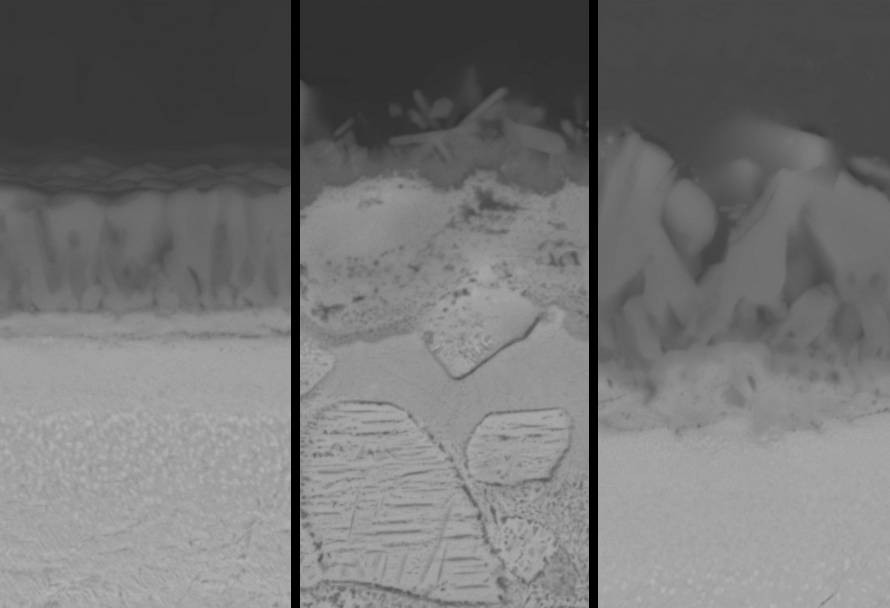F. Lanoy, E.M.H. White, B. Schäfer, C. Tang, C. Schroer, B. Gorr, M.C. Galetz
Materials and Corrosion (2025), DOI: 10.1002/maco.70070

Refractory high-entropy alloys (RHEAs) offer high strength at extreme temperatures but suffer from poor oxidation resistance. The Ta-Mo-Cr-Ti-Al system shows promising oxidation resistance due to protective (Cr,Ti,Ta)O₂ scale formation. This study investigates how varying Cr:Ti ratios (2:1, 1:2, and equimolar) affect microstructure and oxidation behavior in Ar-5 vol.%H₂O and Ar-2.5 vol.%O₂ atmospheres at 1000°C. Titanium influences oxide defect structure through its valence state, controlling oxygen transport kinetics. Results demonstrate strong atmosphere-dependent performance: Cr-rich alloys excel in dry oxygen due to continuous chromia formation and reduced oxygen diffusion zones, while Ti-rich alloys perform superior in humid conditions, likely due to hydrogen uptake effects and reduced chromium volatilization. The study reveals that optimal oxidation resistance requires atmosphere-specific compositions, with microstructural factors (Laves phase distribution) playing equally important roles as oxide defect chemistry in determining overall performance.